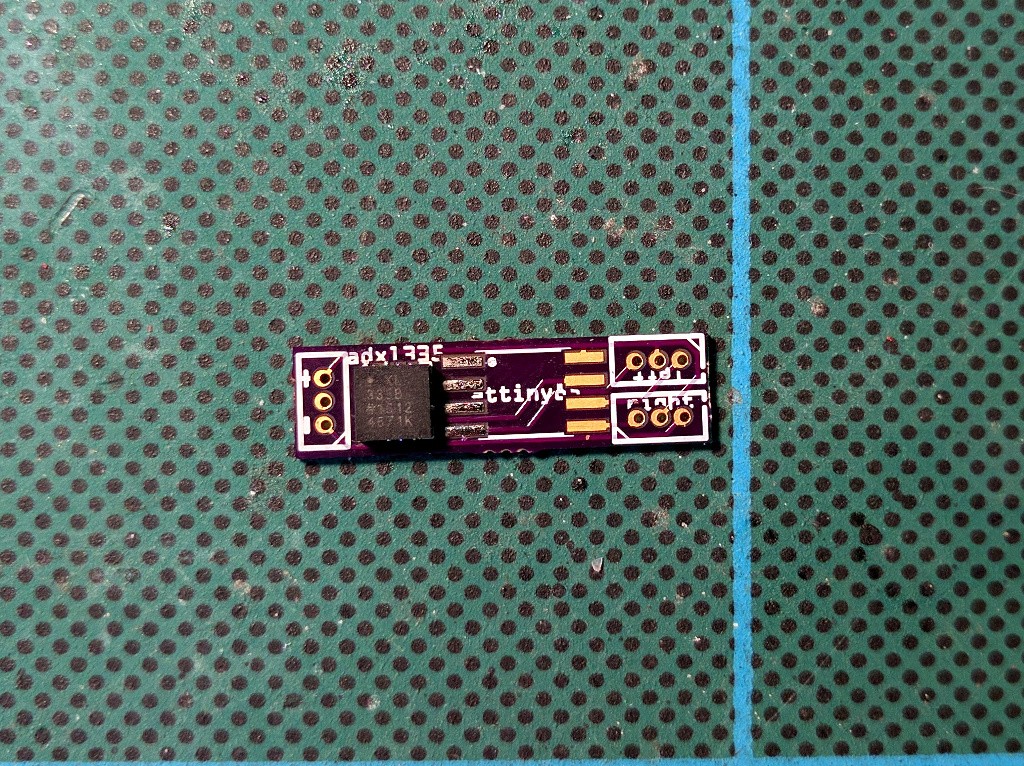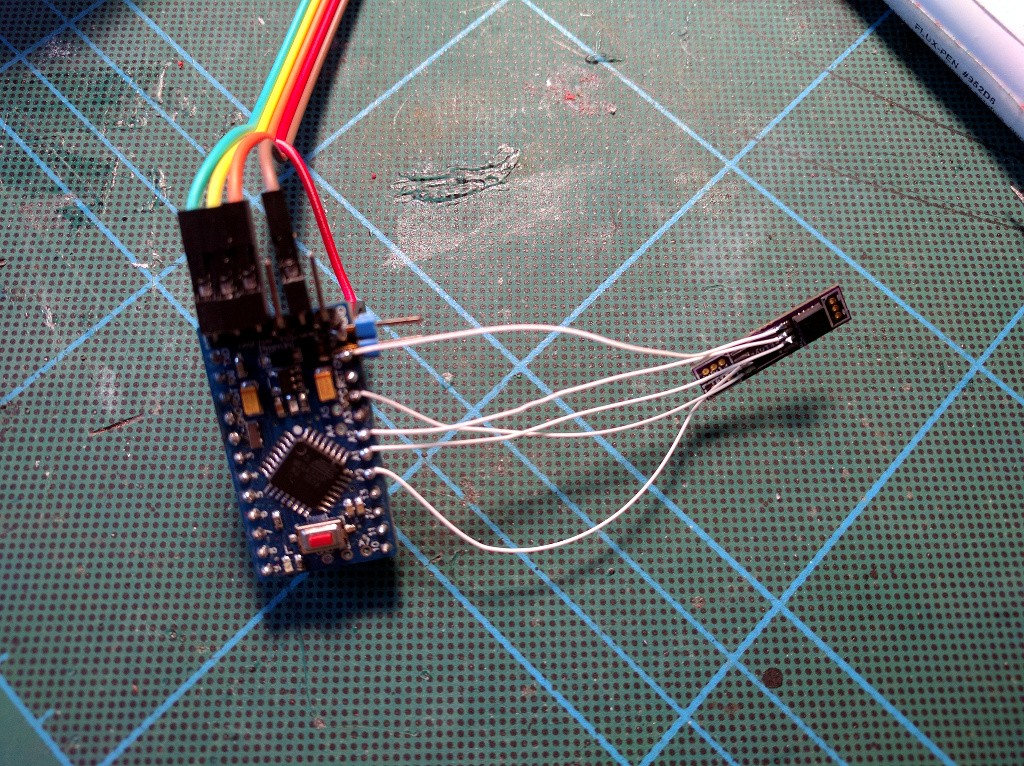The PCBs that I wrote about last time were not the real PCBs. OSHPark has made a mistake in the board thickness (a new option that they have), and sent me the boards again, this time thinner. I didn't realize that, so I was quite surprised to see the second shipment, but all is good.
The GY-61 breakout kit also arrived, so I'm ready to try and solder it on that board. This is a "LFCSP LQ" surface-mount package, so impossible to do with a hand soldering iron. At the hackaday channel someone suggested using a kitchen stove, so I have that a try. First, I tinned the board:



A quick sketch lets me verify that the thing works!
void setup() {
Serial.begin(115200);
}
void loop() {
Serial.print(analogRead(A0));
Serial.print(", ");
Serial.print(analogRead(A1));
Serial.print(", ");
Serial.print(analogRead(A2));
Serial.println();
delay(300);
}Now I just need to figure out what are the center values when powered with the battery I want, and write the program.
 Radomir Dopieralski
Radomir Dopieralski
Discussions
Become a member
In order to follow projects & hackers or give likes
Already a member?you need to create an account.
easy!
Are you sure? yes | no